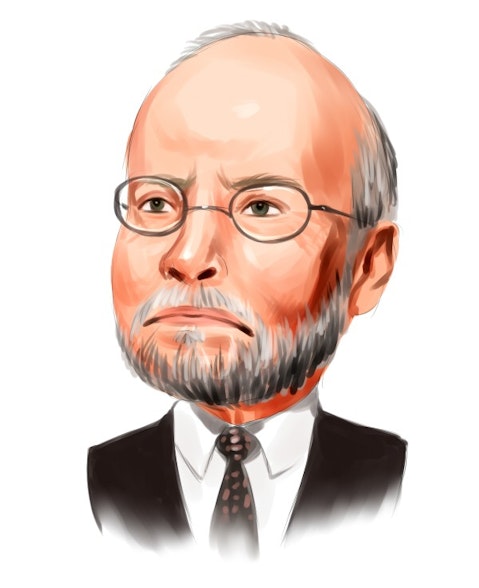Paul Singer founded Elliott Investment Management in 1977 in New York. It is one of the oldest hedge funds under continuous management and is also one of the largest activist funds in the world. It is the management affiliate of American hedge funds Elliott Associates and Elliott International Limited. Launched in 1994, Elliott International Limited has consistently outperformed the S&P 500 index by ~5 percentage points annually since its inception, which is a track record mirrored by Elliott Associates. Paul Singer earned a BS in psychology from the University of Rochester and a JD from Harvard Law School. He then spent 4 years working in corporate law firms and the investment bank Donaldson, Lufkin & Jenrette before founding Elliott Investment Management. Elliott Management has 38 clients and discretionary assets under management (AUM) of $97.37 billion, according to the Form ADV dated 13 February 2025. The last reported 13F filing for Q4 2024 included $16.66 billion in managed 13F securities and a top 10 holdings concentration of 82.44%.
Singer has built a reputation on Wall Street for his aggressive tactics that often generate significant shareholder value by exploiting weaknesses in various asset classes. His initial approach to investing was to target companies and even governments while purchasing extremely distressed debt. In February 2025, Singer appeared on a Podcast titled ‘In Good Company with Nicolai Tangen’, where he also discussed what he believes is the reason behind bad investments. While bad luck remains a relevant factor, he believes that these failures result from oversights and inadequate and/or incorrect hedging strategies:
“Sometimes it’s bad luck, but more frequently it’s (that) we missed something. We missed. Or the hedges weren’t, they weren’t the right hedges. The tracking error was much more than we expected. At the beginning of my career, 1977 to like 1987, hedging was much more simple, because we were long a convertible bond and short the stock into which the convertible was convertible. So that’s very straightforward. And tracking error wasn’t really a factor. We’ve become much more sophisticated in hedging, in creating bespoke hedges for different kinds of trades. But even those don’t work out exactly, you know, all the time. But sometimes, you know, the worst trades, and I don’t mind mentioning them, it’s a kind of a form of therapy and a pedagogical exercise. The worst trades are the trades that you misunderstand the risk. You put it into the wrong category.”
That being said, we’re here with a list of billionaire Paul Singer’s 10 stock picks with huge upside potential.

Paul Singer of Elliott Management
Our Methodology
To compile the list of billionaire Paul Singer’s 10 stock picks with huge upside potential, we sifted through Q4 2024 13F filings of Elliott Management from Insider Monkey. From these filings, we checked the upside potential from CNN for the top 20 stock picks and ranked the stocks in ascending order of this upside potential. We have also added Elliott Management’s stake in each stock as well as the broader hedge fund sentiment for it.
Note: All data was sourced on May 8.
Why are we interested in the stocks that hedge funds pile into? The reason is simple: our research has shown that we can outperform the market by imitating the top stock picks of the best hedge funds. Our quarterly newsletter’s strategy selects 14 small-cap and large-cap stocks every quarter and has returned 373.4% since May 2014, beating its benchmark by 218 percentage points (see more details here).
Billionaire Paul Singer’s 10 Stock Picks with Huge Upside Potential
10. Liberty Broadband Corp Series (NASDAQ:LBRDA)
Elliott Management’s Stake: $178.26 million
Number of Hedge Fund Holders: 22
Average Upside Potential as of May 8: 16.48%
Liberty Broadband Corp Series (NASDAQ:LBRDA) engages in communications businesses in the US. It operates in two segments: GCI Holdings and Charter. The GCI Holdings segment provides a range of data, wireless, video, voice, and managed services. The Charter segment offers subscription-based internet, video, and mobile & voice services.
GCI achieved a record revenue of over $1 billion in 2024, which was an increase of 4% year-over-year. This is because GCI’s business data revenue experienced growth due to an upgrade cycle within school and healthcare corporations in rural Alaska. However, within its consumer segment, GCI experienced a decline in subscribers.
Revenue-generating wireless subscribers decreased by 300, and cable modem subscribers declined by 4,900, with ~3,800 of these cable modem losses attributed to the expiration of the Affordable Connectivity Program. Earlier this year, analyst Matthew Harrigan maintained his Buy rating on the stock and labeled it an attractive investment opportunity. However, he lowered the price target from $130 to $115 due to current market conditions.
Conventum – Alluvium Global Fund is positive on the company and stated the following regarding Liberty Broadband Corporation (NASDAQ:LBRDA) in its Q3 2024 investor letter:
“Liberty Broadband Corporation (NASDAQ:LBRDA) (up 40.7%), has investments in the broadband sector via Charter Communications and GCI Holdings, which represents Liberty’s Alaskan operations. Charter announced pleasing second quarter results. So far it has retained the vast majority of the former Affordable Connectivity Program (ACP) recipients (but this is yet to fully play out), its mobile business is gaining further traction (with a strong reception to its phone upgrade and service plans), and good progress is being made on cost management. Both Liberty and Charter’s share prices rose (by 15.0% and 16.6%) on the release of these results. But there was no cause for any change to our analysis nor valuation – and both still appeared cheap to us. Then, later in the quarter Liberty received a proposal from Charter to consolidate the entities (but excluding GCI). Liberty provided a counter proposal at a higher exchange ratio and that included GCI (which Charter’s initial correspondence suggested may be entertained). Depending on how the value of GCI is accounted, the consideration difference is around 20-25%, which is not insurmountable in our view. The proposed simplified structure makes sense and is likely to be appreciated by investors on both sides. On the day this was announced, it was not surprising that Liberty’s share price was up 28.4%, and Charter’s fell marginally (down 2.5%). In our view, only now after the strong price gains is Liberty’s trading price getting close to fair value. Accordingly, no action was warranted and our Liberty position now stands at 7.1%.”
9. Phillips 66 (NYSE:PSX)
Elliott Management’s Stake: $88.29 million
Number of Hedge Fund Holders: 47
Average Upside Potential as of May 8: 24.59%
Phillips 66 (NYSE:PSX) operates as an energy manufacturing and logistics company. It operates through five segments: Midstream, Chemicals, Refining, Marketing & Specialties (M&S), and Renewable Fuels. The company markets its products through Phillips 66, Conoco & 76, JET, Kendall, Red Line, and other private label brands.
Phillips 66 is investing in expanding its natural gas gathering and processing footprint within the Permian. One instance of this is the Dos Picos II expansion plant, which is expected to be online in Q3 2025. Furthermore, the newly announced Iron Mesa plant is also expected to come online in Q1 2027 and will be serving the Delaware and Midland Basins.
The recent acquisition of EPIC NGL also expands Phillips 66’s takeaway capacity from the Permian Basin. This boosts the company’s Midstream segment’s performance. In Q1 2025, the company’s Midstream segment’s results decreased slightly due to lower volumes caused by refining turnaround activity. The Sweeny Hub within the Midstream segment achieved a record 650,000 barrels per day in fractionation volumes during the quarter.





